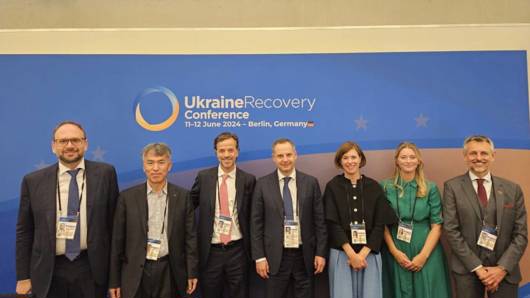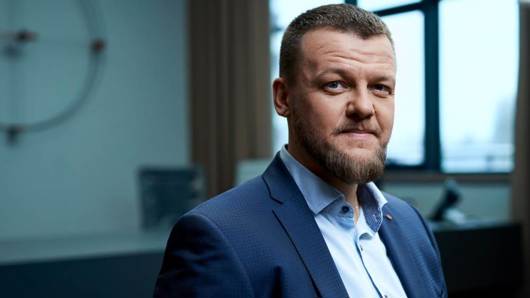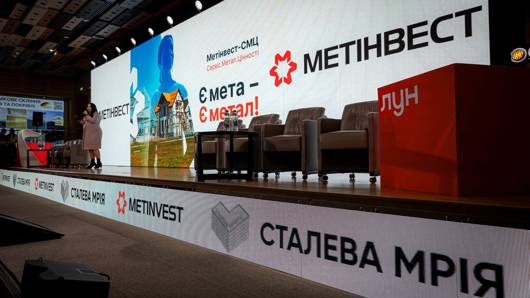In an interview with Pryamiy TV channel, Oleksandr Myronenko, chief operating officer of Metinvest Group, spoke in detail about the creation of Ukraine’s first underground hospital for the armed forces, feedback from medics, the evolution of military production and new projects for the front line.
– First, there were “hideouts”, and now the project has evolved to include an underground hospital. What prompted its creation?
– The motives are quite simple. We all understand the need to support our defenders and do everything in our power to save their lives. The “hideouts” were the first step in providing a certain level of security at the positions.
How did the idea of creating an underground hospital come about? In late 2022 and early 2023, medics began using our “hideouts” as small stabilisation points on the front line. These points were based in rural huts, and when the enemy observed, via unmanned aerial vehicles, where the wounded were being evacuated, they would strike. When a hut stands in open ground, it is easy to destroy everyone inside. So, the medics used our “hideouts” to bury themselves underground and protect themselves.
Then we built the first command posts at the level of an operational-tactical group. We brought representatives of the Medical Forces Command there, showing them how these facilities function to meet military needs and manage troops. We then began considering how to implement a similar project for the medical forces to provide assistance to soldiers before they reach a hospital for surgical or other services.
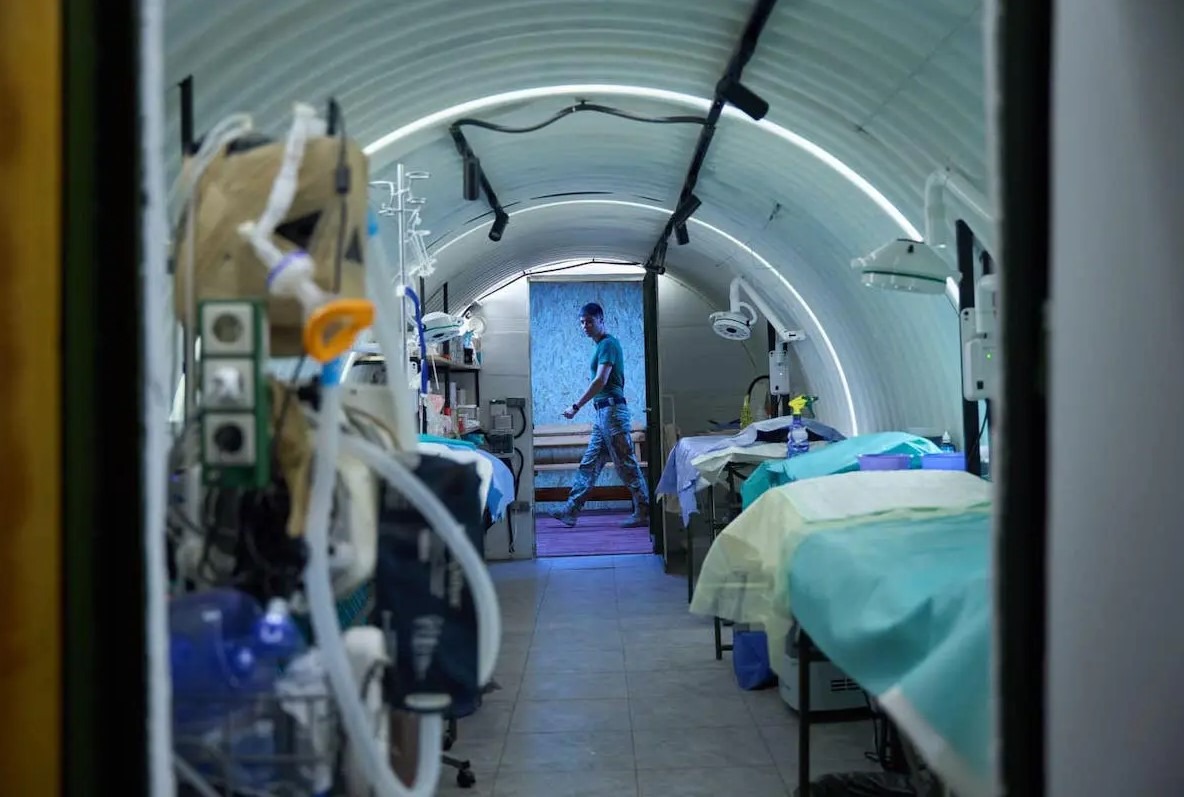
– What is Metinvest Group’s role in this project? Tell about your cooperation with Medical Forces “East”.
– We have been cooperating with Medical Forces “East” for quite some time. Since the beginning of the war, we have been supplying them with ventilators, medicines and so on. In this project, the medics became our consultants. We incorporated their knowledge into the blueprints and agreed with them on how everything should be done. We also consulted with representatives of the Ministry of Defence regarding safety: specifically, how to properly bury the structure. When we developed this project ad hoc, since no one had ever done this before, we began its implementation.
As for the role of Metinvest Group and Rinat Akhmetov’s Steel Front in this project, we have actually handled everything: from the design and financing stages to the construction of the facility and partial provision of medical equipment. Some specialised military equipment cannot be purchased on the open market, so it was supplied by the medical forces.
– How much was invested in the creation and equipment of the underground hospital? How long did it take to implement this project?
– The total investment in the safety of our military amounted to UAH20 million, of which UAH7 million was spent on medical equipment and UAH13 million on metal structures, timber, construction work and infrastructure. A significant part of the work involved creating the infrastructure around the hospital to enable it to operate 24/7.
Excluding the preliminary consultations with the medical forces, it took us four months from the start of design and blueprint development to implementation and addressing all construction shortcomings. We began in mid-April and handed over the facility to the medical forces in mid-August.
– From your perspective, what are the main objectives of the underground hospital?
– The main objective is to provide advanced medical care: not just stopping bleeding or carrying out basic stabilisation measures. This hospital has two operating rooms where surgical interventions can be performed.
If surgery is not required, stabilisation services are provided in separate rooms. There are also rooms where patients await evacuation after receiving medical care. Of course, we have also taken care of the staff: there are rooms for dining and rest. The total area of the hospital is 500 square metres underground.
– What advantages does an underground hospital have over field hospitals?
– It is closer to the front line than a stationary hospital. All hospitals located within a 15-kilometre zone from the front line have been destroyed. The underground hospital offers concealment and camouflage. It is equipped so that even a full-sized truck can drive underground without being visible. Of course, it also provides protection for medics, as the hospital is located six metres underground.
To ensure that the entry of large vehicles is not visible from drones, we had to address a range of issues during construction. We would build a section, launch a drone and observe how it looked: identifying what was visible, what needed improvement, or whether additional entrances and exits were necessary.
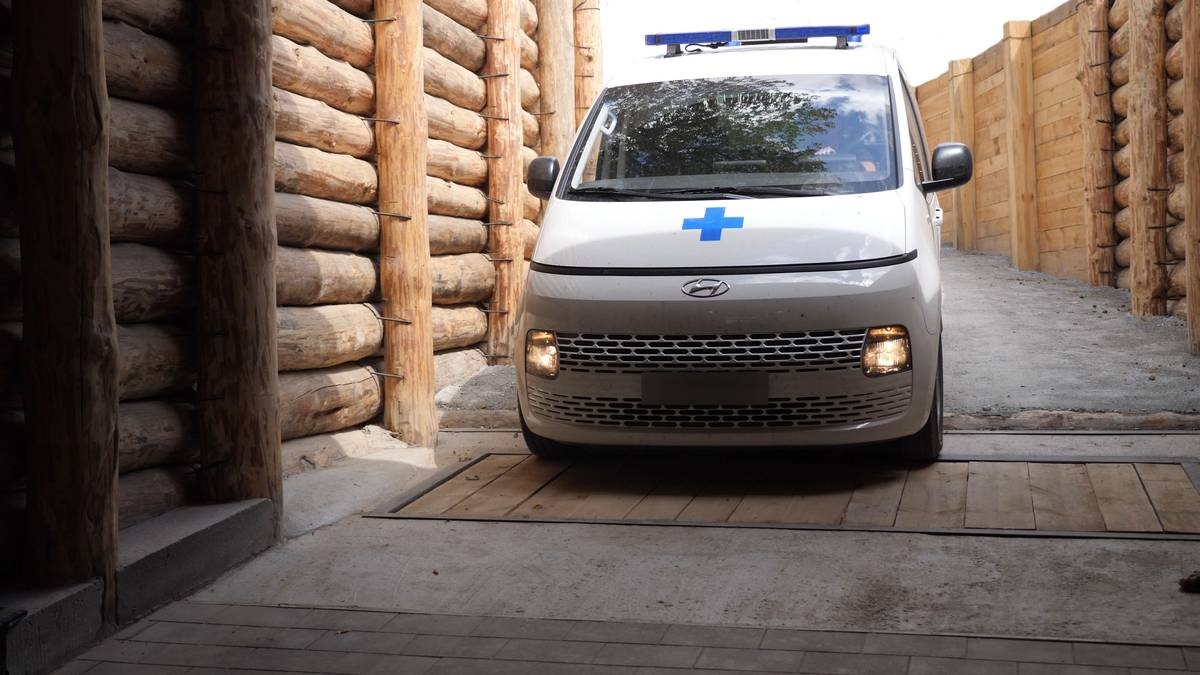
– How are the people working at the hospital trained?
– The Medical Forces Command is responsible for training specialists. From my conversations with them, they have selected highly professional personnel: surgeons, intensive care physicians, traumatologists and nurses. They are all working with a single goal in mind: to provide maximum assistance to our soldiers to save their lives and minimise the health impact of injuries sustained during combat operations.
– What technologies were used for the underground hospital?
– The hospital is equipped with the latest military technology. There are even things that I have seen for the first time: universal devices in the form of a small box that fully meet all surgical needs. Then there is the standard set: cardiac monitors, ventilators and so on. Essentially, the hospital is equipped with all the necessary technology. Speaking of innovations, the building itself is groundbreaking.
I have spoken extensively with doctors; they have not seen underground hospitals of this calibre in Europe. While medical equipment provision in Europe is more or less similar, it is designed for open areas. These are containers installed in a certain order 15-20 kilometres from the front line. If the enemy spots a cluster of vehicles and people, they will strike. Europeans have not even conceived of locating hospitals underground.
– What does the hospital look like and what are the logistics inside?
– The hospital has a fairly large central entrance where vehicles carrying wounded soldiers drive in. Depending on the severity of the injury, those needing stabilisation or minor assistance are directed one way, while those requiring surgery go another way. There is also a laboratory outside these blocks where various tests can be conducted. A bit further along is a section where soldiers await evacuation after receiving medical care.
This is a hospital at the level of an operational-tactical grouping of troops. Together with the medical forces, we have also developed concepts for brigade medical stations. For a brigade, it is slightly smaller than a hospital; for a battalion, even smaller. We are currently formalising these projects and coordinating with medics to replicate them further.
– How did you address energy and water supply issues?
– The hospital is fully equipped with all communications. Regarding electricity, there are several options: the hospital is connected to the general grid and has two backup generators. Water is available 24/7 from its own well. There is also a septic tank for sewage. Showers, toilets and other amenities are safely located underground. Additionally, there are communication systems, electronic warfare systems, internet and Wi-Fi. By the way, the first sign for medics that a soldier is going to be okay is when they ask for the Wi-Fi password.
– Have you received any feedback from the military or medical staff?
– A large number of soldiers have already received assistance at the hospital. As for feedback, it was not very convenient to communicate with the soldiers; a wounded person has different priorities after medical care than providing feedback. They are alive, and that is what matters.
As for the medics, they were satisfied. When you see the medical staff’s eyes light up because a facility has been created where they can work at full capacity without restrictions, that is the best feedback, in my opinion. It is a surge of positivity from them and feedback that they have never had hospitals of this level before.
– Do you have plans to build a network of such underground hospitals on the front line?
– It is planned. We funded this prototype entirely. We are planning some form of cooperation where we, for example, handle all the equipment for the hospital, and the Ministry of Defence, together with the leadership of the medical forces, will be responsible for the medical equipment. We are currently in the process of defining this cooperation and replicating this large project. We are also determining the number of larger and smaller projects we plan to implement. We have enough steel, and our people will have enough strength and inspiration. When they see the results and the gratitude of the medical staff, it motivates them to take on new projects.
– What other Steel Front projects are you currently working on?
– We are actively continuing the programme of steel protection for armoured vehicles like the Bradley, Abrams, T-64, and T-72. We are currently completing steel screens to protect against drone attacks for the Leopard and are looking towards lightly armoured vehicles.
And, of course, we are working on fortifications around Pokrovsk. We are continuously building fortifications: our employees are out every day, with more than 30 units of equipment working to strengthen the city. We are also using our “hideouts” there.
– How does the process of developing additional protection for military equipment proceed?
– Those who work with specific equipment understand its weaknesses: where it has been hit by FPV drones and what needs reinforcement. They show our designers where and how this protection should be arranged, where it is most convenient to install so it does not affect the equipment’s tactical and technical characteristics, slow it down, or interfere with turret movement, and so on. In places where this equipment undergoes repair or maintenance, we collaborate with soldiers and military engineers to create blueprints and manufacture the protection.
– Do you envisage any other functionality for the “hideouts” besides what you have mentioned?
– Yes, they serve as command posts. There are also smaller “hideouts” for observation posts or for drone operator crews. These are also installed underground to enable safe operations.

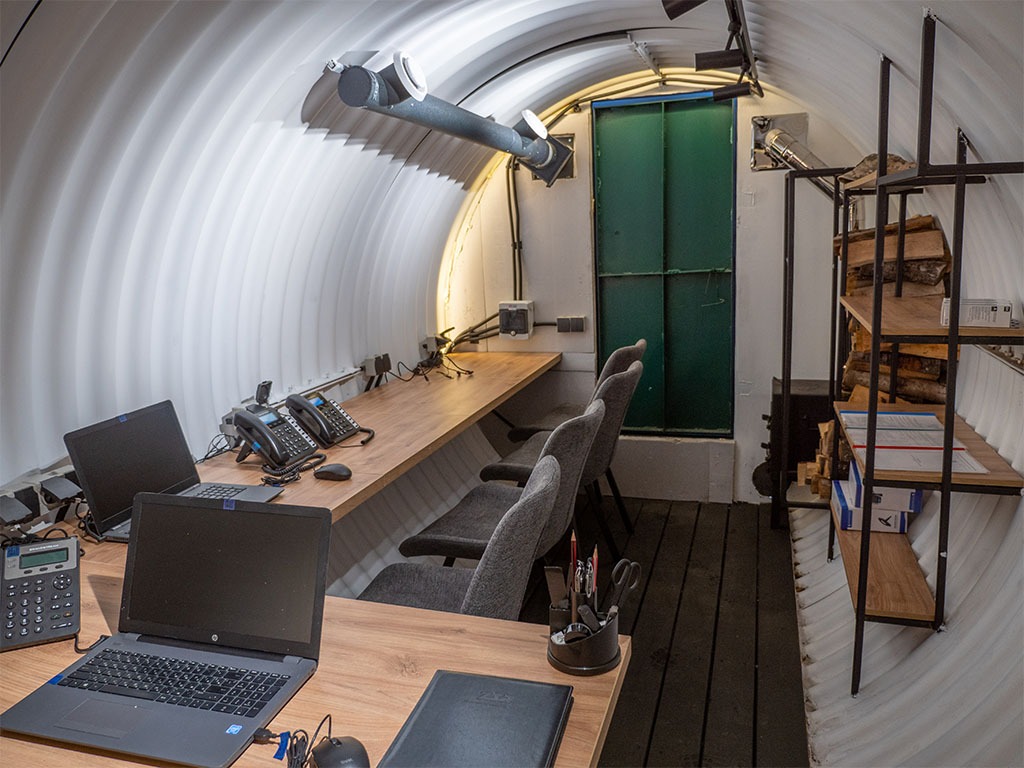
– What would you like to say to people about the purpose of the Steel Front?
– I have just one message to our society: do not forget that the war is ongoing. The soldiers at the front are having a hard time right now, as hostilities are quite active. Everyone must help the Ukrainian defence forces and work for the country’s economy in their own way. If we do not support our economy and pay taxes, we will not survive. We must continue to hold the line and move forward together to ensure that Ukraine remains an independent state.
To the people working on this project, I want to express my gratitude and deepest respect for each product, for the quality, and for their attitude towards work.







